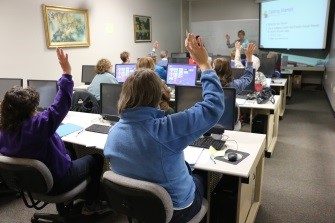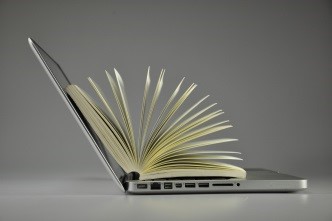Assistive Technology Supports for Reading: How to better support your students’ reading environment: Laptop/Chromebook/Brailler Display Supports
Laptop/Chromebook/Brailler Display Supports
Positioning supports for larger mobile devices such as laptops, Chromebooks and braille displays when reading are similar to monitor supports in that they can be placed on desks, positioned for using when seated in chairs or in bed, or when on the go – using mobile mounts.
Desk Supports
When reading on these large mobile devices, risers are most often needed to ensure that the screens are positioned at eye-level. It is important to consider the height, keyboard, posture, and stability of device when selecting a desk support.
There are a variety of types to help with device angles, elevation, and rotation, and even a mixture of all 3.
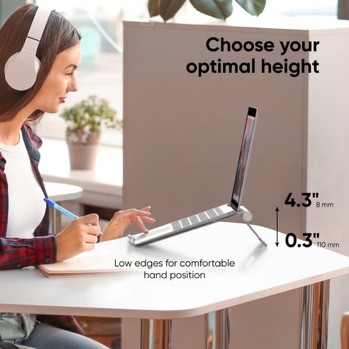 Easily carried risers that elevate the rear of the device to raise the screen to a limited height while angling the keyboard.
Easily carried risers that elevate the rear of the device to raise the screen to a limited height while angling the keyboard.
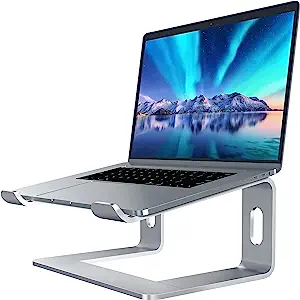
- Elevated risers with fixed keyboard tilt are available to sit on a student’s desk.
 Risers with adjustable height and angle provide more options for positioning the screen and keyboard for students.
Risers with adjustable height and angle provide more options for positioning the screen and keyboard for students.

- Risers with adjustable tilt, elevation and rotation give the most options for providing a well-positioned larger mobile devices for students when reading.
Chair or Bed Supports
When students are in the library or lounge areas reading while seated or a comfy chair or sofa - or when they are outdoors and need support while sitting on the grass, large mobile device support may be needed to help with better posture while reading. While at home, these supports can also be helpful if reading in bed.
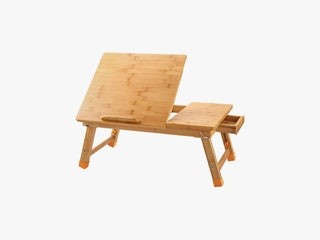 A bench-like tray over the student’s lap makes for better positioning a device while reading seated in a chair or on upright in bed. This device offers an adjustable device tilt enabling a laptop or Chromebook’s screen to be raised closer to eye-level.
A bench-like tray over the student’s lap makes for better positioning a device while reading seated in a chair or on upright in bed. This device offers an adjustable device tilt enabling a laptop or Chromebook’s screen to be raised closer to eye-level. The Wedged Lap Board also provides device stability while seated. This may be used in a variety of setting and offers screen adjustments, although limited in terms of height.
The Wedged Lap Board also provides device stability while seated. This may be used in a variety of setting and offers screen adjustments, although limited in terms of height.
Chair and bed supports are also available as clamp-on or as floor models. These are helpful for those who desire or require a more hands-free option when reading while seated or lying down.
- A device stand that clamps on, is a portable option when reading on a larger mobile device. They can be positioned…
 … at a desk
… at a desk
… in bed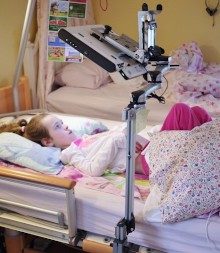
 … seated in a wheelchair.
… seated in a wheelchair.
- A floor stand is also a portable option when reading on a larger mobile device. These stands can be positioned anywhere and like the clamp-on devices, floor stands, they are incredibly versatile if one has the space!
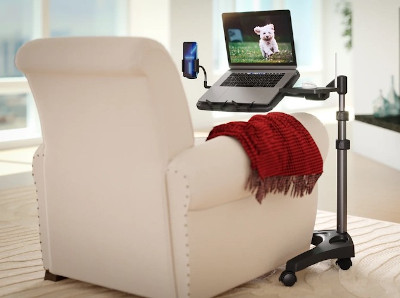
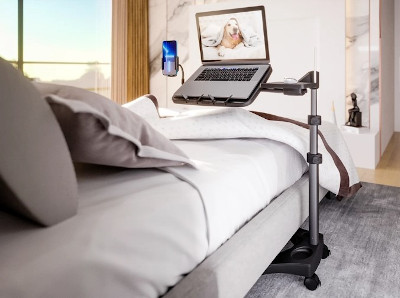
So, as you can see, there are many options for positioning Laptops, Chromebooks, and Braille Displays when your students are reading electronic books. Makes some changes in your classroom to better support your students’ reading environment and body positioning!



